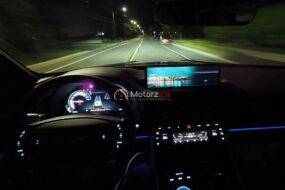Modern Connectivity How Cars Are Becoming Digital Hubs evolving landscape of technology, one of the most significant transformations is happening right in our driveways. Modern automobiles are no longer just machines designed to transport us from one place to another; they are evolving into digital hubs, seamlessly integrating with our connected lives. The convergence of automotive and digital technologies is reshaping the way we interact with our vehicles, revolutionizing safety, entertainment, convenience, and even the future of transportation itself.
1. Connectivity Redefined
Gone are the days when cars were mere mechanical marvels. Today’s vehicles are equipped with a plethora of sensors, cameras, and communication technologies that enable them to collect and transmit vast amounts of data. This connectivity extends beyond the vehicle itself, as cars can communicate with other vehicles (V2V), infrastructure (V2I), and the cloud (V2C). This interconnectedness forms the foundation of the modern digital car.
2. Safety First
Modern Connectivity One of the most critical aspects of this digital transformation is the enhancement of safety. Advanced driver assistance systems (ADAS) rely on sensors and cameras to provide real-time data about the vehicle’s surroundings. These systems can detect potential dangers, alert the driver, and even take corrective actions, such as automatic braking or steering to avoid collisions. Moreover, vehicle-to-vehicle communication can help create safer road environments by allowing cars to share information about road conditions, traffic, and potential hazards.
3. Entertainment and Infotainment
Modern Connectivity more than just modes of transportation; they are now entertainment centers on wheels. Infotainment systems provide access to a wide range of services, including streaming music, podcasts, and video content. Passengers can stay connected through their smartphones, tablets, and other devices, seamlessly integrating their digital lives into the car’s environment. Voice-activated virtual assistants, like Amazon’s Alexa or Apple’s Siri, further enhance the driving experience by enabling hands-free control of various functions.
4. Connectivity for Convenience
Modern connectivity extends beyond entertainment to provide unprecedented convenience. Remote start, lock, and unlock capabilities are now commonplace, allowing users to prepare their cars and control access from their smartphones. This functionality is not limited to just starting the engine; it also includes adjusting climate control, locating the vehicle in a crowded parking lot, and monitoring maintenance needs.
5. Over-the-Air (OTA) Updates
Cars are no longer static in their features and capabilities. Manufacturers can now push software updates to vehicles over the air, just like updating your smartphone’s operating system. This means that your car can improve and evolve even after you’ve driven it off the lot. OTA updates can enhance performance, add new features, and address security vulnerabilities, ensuring that your car remains up to date-with the latest advancements.
6. Autonomous Driving
The digital transformation of cars plays a pivotal role in the development of autonomous vehicles. Self-driving cars rely heavily on connectivity and advanced sensors to navigate safely and efficiently. The ability to communicate with other vehicles and infrastructure helps autonomous vehicles make real-time decisions, such as adjusting speed to match traffic flow or avoiding accidents. This technology has the potential to revolutionize transportation by reducing accidents, congestion, and energy consumption.
7. Data Privacy and Security
As Modern Connectivity digital hubs, the collection and transmission of data raise important concerns about privacy and security. Manufacturers must implement robust cybersecurity measures to protect vehicles from hacking and unauthorized access. Moreover, the use of driver and vehicle data raises questions about who owns this information and how it is used. Striking a balance between data-driven services and individual privacy rights is an ongoing challenge.
8. The Road Ahead
The journey of cars becoming digital hubs is just beginning. With the advent of 5G technology, the possibilities for connected vehicles are expanding rapidly. Low-latency, high-speed connectivity will enable even more advanced features and services, such as augmented reality navigation, real-time traffic optimization, and seamless vehicle-to-home integration.
Conclusion
In conclusion, the Modern Connectivity and digital technologies are transforming our cars into digital hubs that enhance safety, entertainment, convenience, and sustainability. As we move forward, the automotive industry and society must grapple with important questions surrounding data privacy, security, and the ethical use of data. Nonetheless, the future of connected cars promises an exciting and transformative journey that will reshape the way we think about transportation and mobility. Buckle up; the ride is just beginning!





